No One In Paris Owns a White Truck
 12.8.2012
12.8.2012
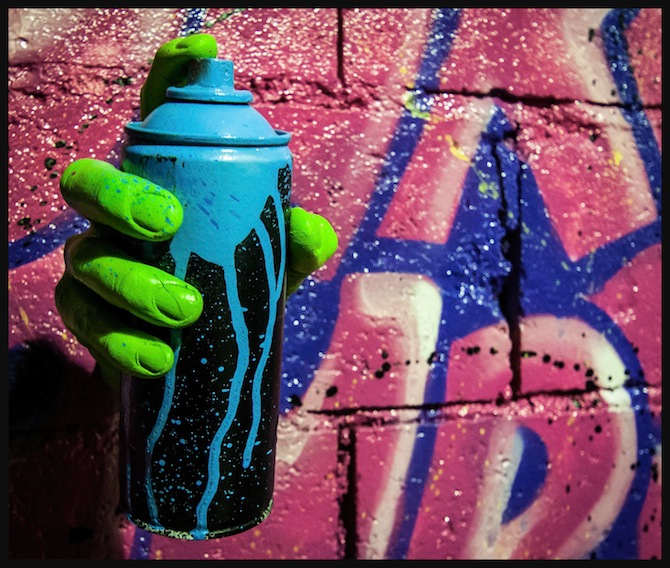
No one in Paris owns a white truck. Oh, they may drive one off the showroom floor white, but after a very short time (overnight in some neighborhoods) they are no longer trucks, or white, but mobile canvases that promote the work of the coming generation of street artists.
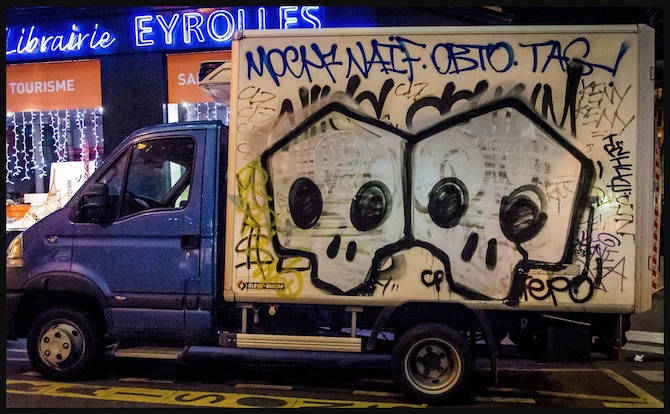
For the folks who own the trucks, this is the downside of street art, the point where they would probably say the practice crosses over into vandalism.
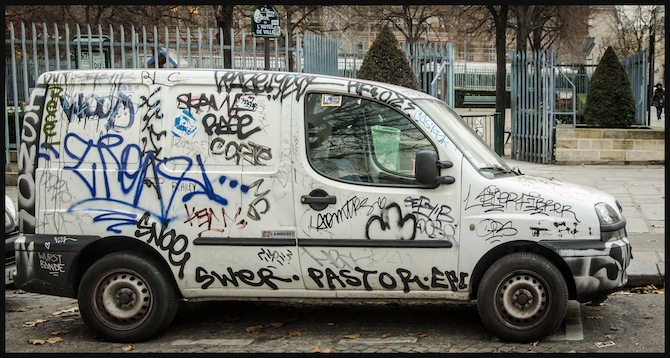
Some of these "artists" are simply taggers, in Paris Play's view, low-level wannabes who piss like wolves with magic markers or spray cans simply to mark territory, and leave their scrawls on the fronts of houses, on shop windows, on automobiles and trucks--in short, anywhere, just to say, "I was here." We agree with Tom Finkelpearl, executive director of New York City’s Queens Museum of Art, who says, “I can’t condone vandalism… It’s really upsetting to me that people would need to write their name over and over again in public space. It’s this culture of fame. I really think it’s regrettable that they think that’s the only way to become famous.”
An article in the latest issue of À Paris, the official magazine the city sends free to local residents, makes a clear distinction between artists and taggers, the latter of whom cost the city €4.5 million ($5.82 million) each year in clean-up fees. À Paris said, "There is no question here of artistic practices on walls or dedicated street art…but those who defile façades and houses." After noting that the city's legal options are limited, the article concludes, "It therefore encourages residents and owners to complain, so that the damage will be treated as a crime and not as a fatality. Le graffiti sauvage is liable to a fine of €3750…up to €7500 for a public building."
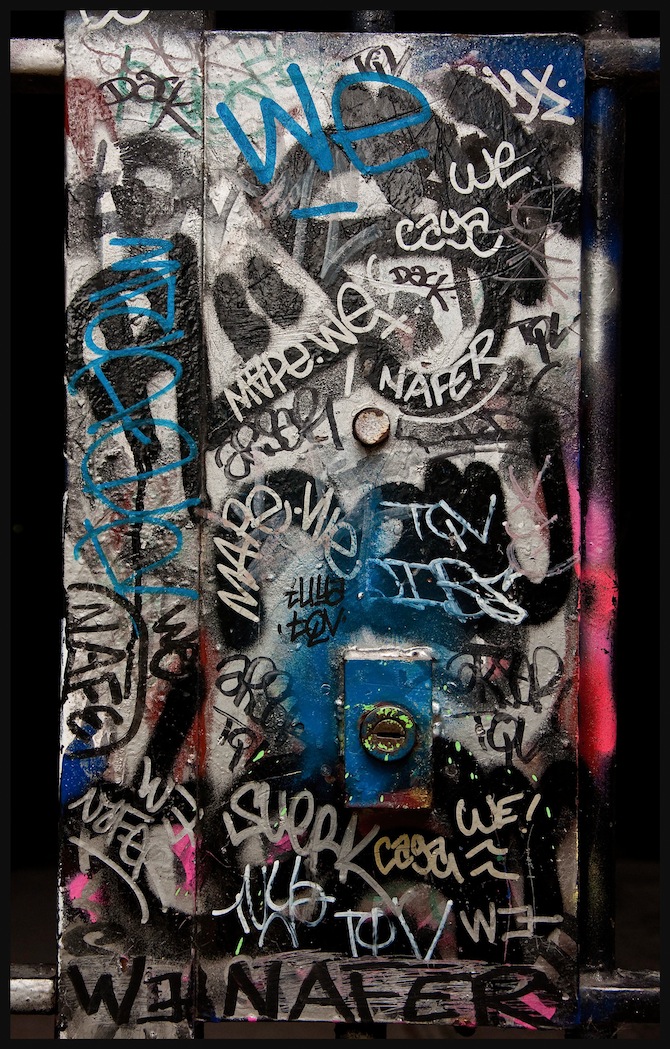
A step up from tagging, the lines begin to blur. When enough tags accumulate, the result can be a collective collage that turns into a work of art. One of our favorites is this tiny work above, the locked gate at a long disused railroad tunnel in the 14th arrondissement.
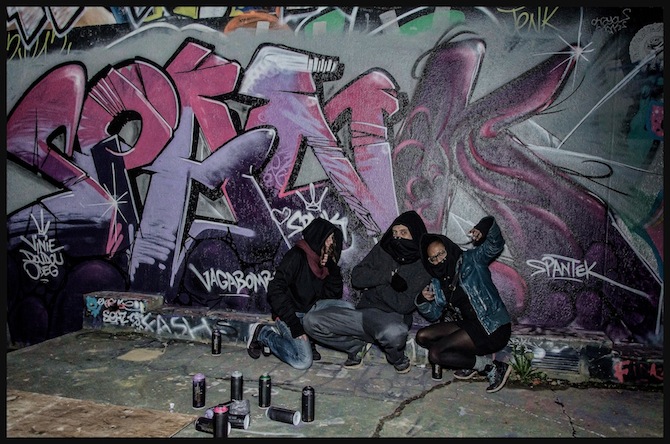 The graffiti crew "Spank," with their latest work on a "legal" wall on city property
The graffiti crew "Spank," with their latest work on a "legal" wall on city property
And the next step up from tags as collage are the works of graffiti artists (individuals or "crews") who create larger spraypainted pieces with psychedelic colors and misshapen letters that carry our minds back to the Wes Wilson, Kelly/Mouse, Arab et al Fillmore and Avalon Ballroom posters that burst out of the Haight-Ashbury in that Sixties blaze of cultural and artistic ferment. We'd call those Bay Area-based artists godfathers to the graffiti crew phenomenon of the seventies in Philadelphia, then New York, etc., though the music that inspired those latter rebels was hip-hop, still associated, in many people's minds, with the larger calligraphic pieces that spread around the world, the gradual evolution of tagging into works of graphic art.
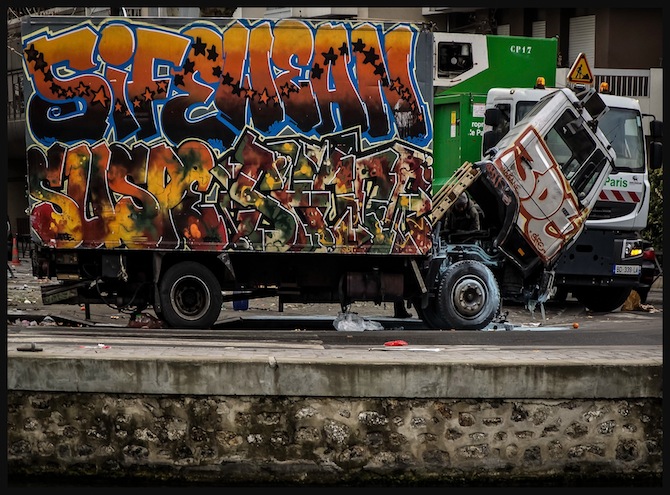
(It's not our intent to delve into the arcana of styles, bubble-lettering versus wild style, or how different styles evolved in different ends of the same town, but anyone who'd like to add to our store of knowledge is free to join in the comments section.)
The final step (so far) are the full-scale works of art, with or without calligraphy, that Paris Play has been covering for the last two years, the urbain art movement that is filling galleries, exhibition spaces, and gradually museums around the world, and fetching prices even heftier than the penalties for tagging.
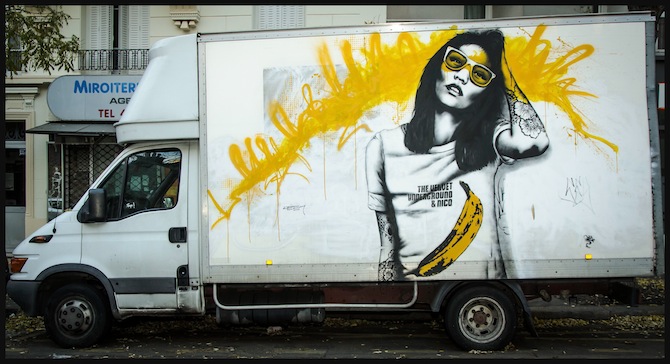
One of the distinctions that artists we've come to know here make is permanence versus impermanence. The organization Le M.U.R., whose exhibition we covered a few weeks ago, now has three billboard sites around the city, but each of those large pieces of billboard art only stays up for two weeks before it is replaced by the work of another artist. Street art, they believe, is ephemeral, ever-changing, which is why we are out at least three days a week documenting with our cameras what we see in the streets. It could literally be gone in a day.
While street artists work in various media--painting, mosaic, wood blocking, yarn bombing, stencils, multimedia installations--many of the art pieces we photograph, like the popular work of Fred Le Chevalier, Kashink, Norulescorp, Tristan des Limbes, Madame, and others are "sticker art" done on paper, with wheat paste to adhere it to the walls, precisely because it is impermanent. Some artists like seeing their work decay over time; the process of decay is part of the life cycle of the work, and a comment on city living. The replacement of their work with other peoples', which also decays and is replaced by others, makes some street walls pentimento collages.
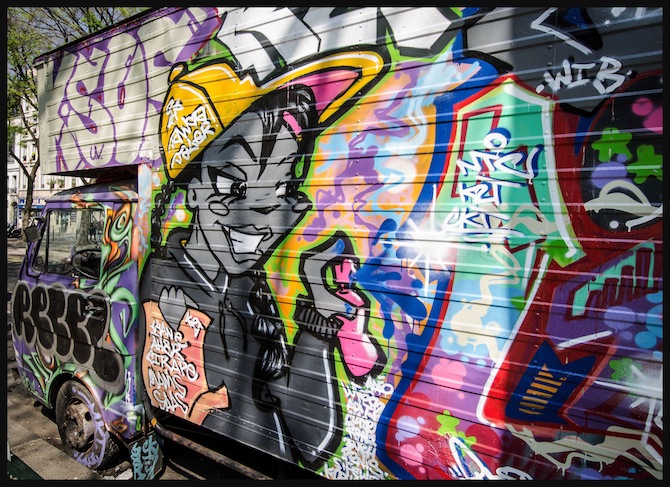
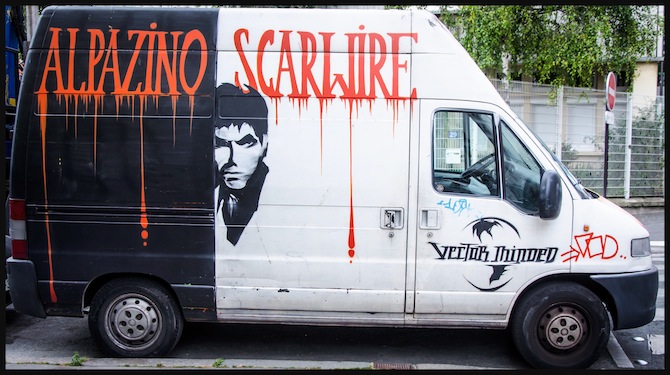
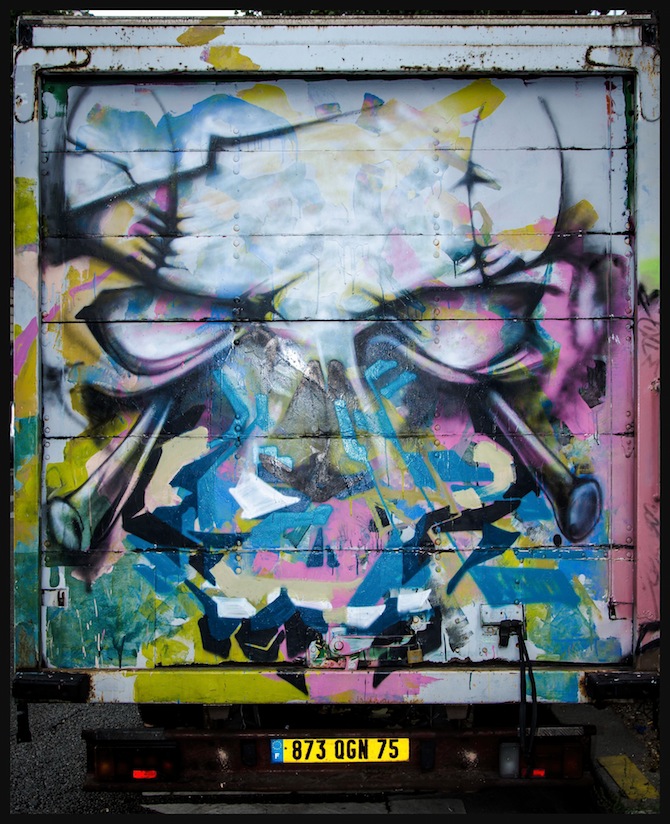
But the spray-painted trucks are permanent, looking like rubber-tired versions of circa-1970s New York City subway cars. In some neighborhoods that have street markets a few times a week, where trucks are parked regularly in order to maintain a position on market day, it's an artistic free-for-all--trucks as chum for a school of art sharks. Walk along Boulevard de la Villette or Boulevard de Belleville in the 11th arrondissement (same street, it just changes its name near the Belleville Metro stop) and you'll see a free plein air gallery.
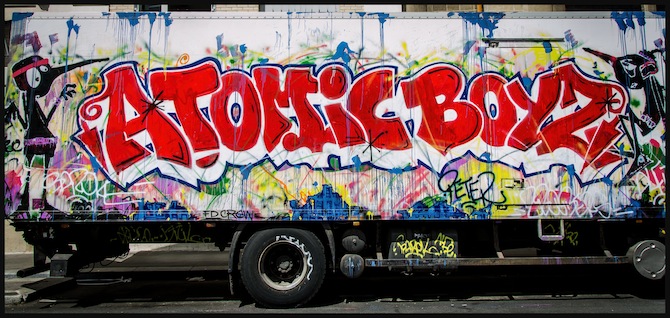
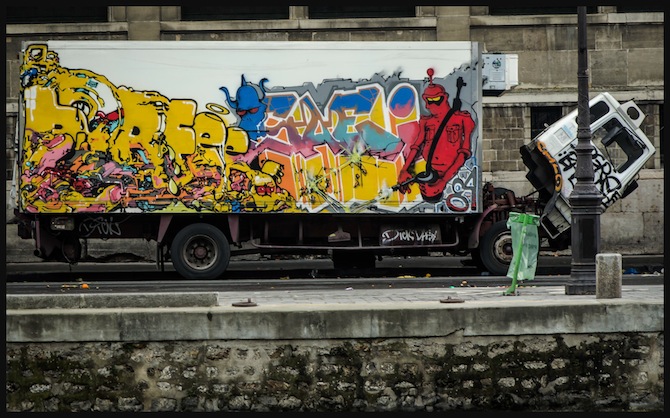
However, there may be a bright side we're missing. These could all be commissioned works, from crews like FD and 1984, whose work appears frequently. Perhaps the truck owners have simply hired a local crew to create some coherent, themed mural, rather than succumb to taggers with no taste. If you can't beat 'em, hand 'em your own spray can and stand back.
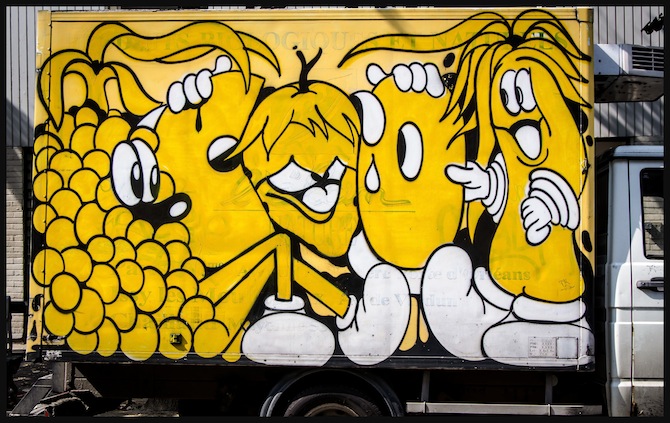
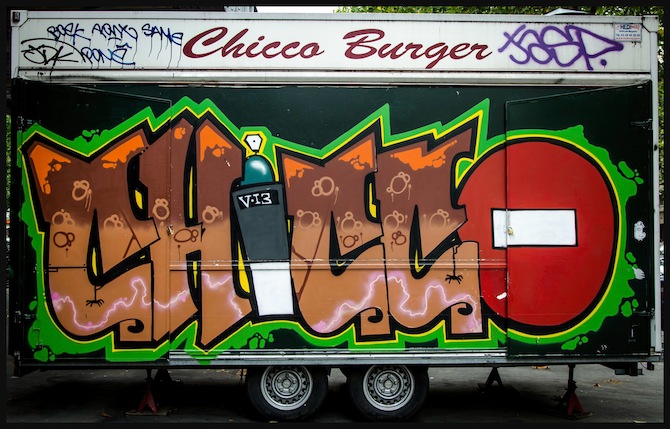
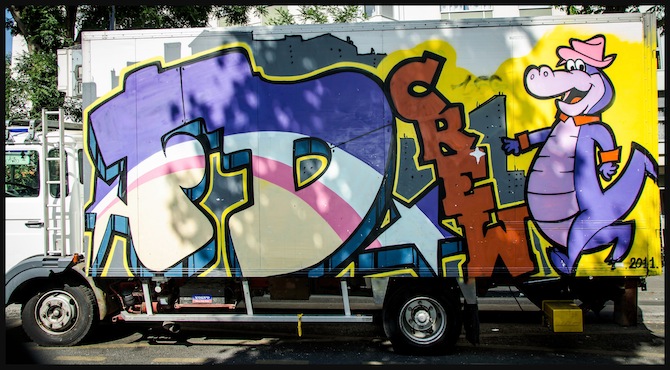
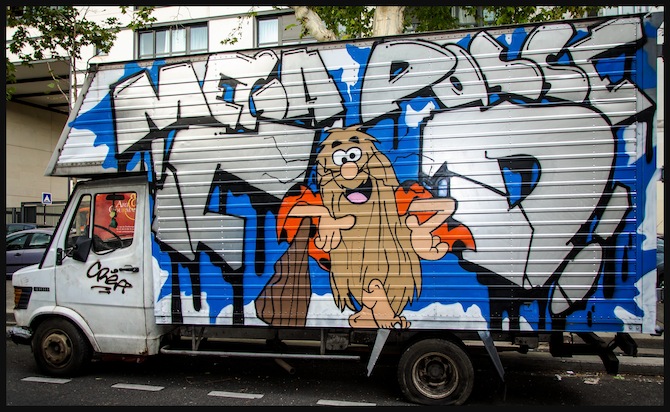
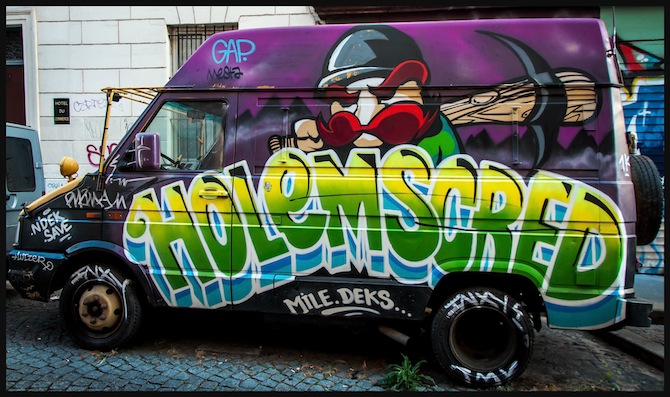
If you'd like to see more, we posted our overflow pictures here.

